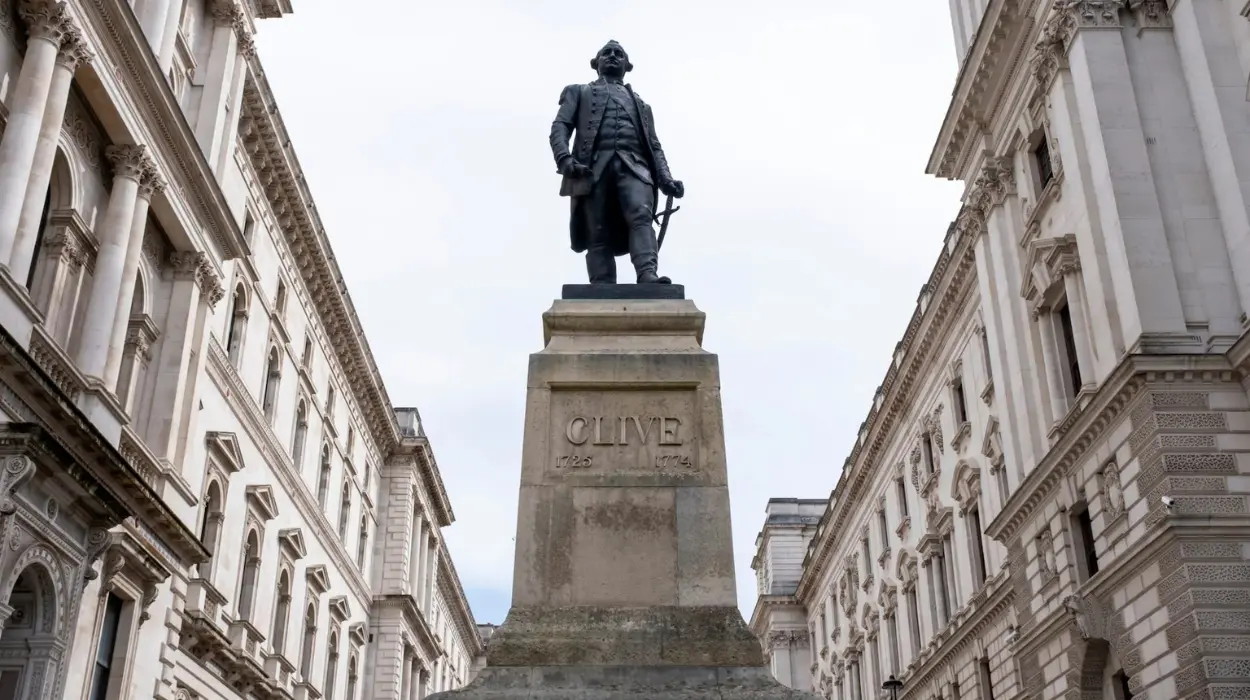UK (Parliament Politics Magazine) – Labour peer Baroness Debbonaire urged the removal of the Clive of India statue, calling it historically inaccurate and damaging to UK-India ties.
As reported by The Telegraph, a Labour peer has called on the government to remove the Clive of India statue outside the Foreign Office.
Baroness Debbonaire’s views on the Clive of India statue
Baroness Debbonaire called the Whitehall statue historically misleading and harmful to Britain-India relations.
At a recent panel event, the former shadow culture secretary under UK Prime Minister Sir Keir Starmer said the statue should be removed.
During her speech at the Edinburgh International Book Festival, the Labour peer stated,
“I’m not sure that a statue of Clive should really have any place outside the Foreign Office.”
She said,
“I walk past it and the frieze shows happy, smiling people really delighted to see him. And that’s just not historically accurate. It’s not helpful for our current relationship with India, and it is deeply unhelpful to see India as a country that Britain civilised.”
Ms Debbonaire stated,
“India had a thriving engineering industry in the 17th century – it knew about mineral extraction, there had been incredible technological advances, it knew about free trade before free trade rules were ever written. That was closed down by an extractive colonising force.”
The peer added,
“But what is pictured on that statue is tiny, tiny little Indians who are subservient and incidental to their own national story, and then a great big Clive.”
The Times reported she described the statue as “a shocking piece of sculpture.”
She slammed the plinth’s depiction showing the Mughal emperor granting Clive the right to collect revenue for the East India Company in 1865.
Baroness Debbonaire’s stance on the Edward Colston statue
In June, activists pulled down a 125-year-old statue of slave trader Edward Colston and dumped it in Bristol’s harbour. Two years ago, Baroness Debonnaire, then Bristol MP, called for the statue’s removal.
Speaking at a Black History Month event in 2018, she stated,
“Having statues of people who oppressed us is not a good thing to be saying to black people in this city.”
Ms Debbonaire added,
“Edward Colston did many things, but he was not completely defined by that, and it’s an important part of saying to black people in the city, ‘you are welcome.’”
Sir Keir Starmer’s stance on the Colston statue removal
Sir Keir Starmer, at the time, said the Colston statue should have been taken down “a long time ago,” though he slammed the protesters’ actions as “neither right nor lawful.”
The now-PM stated,
“That statue should have been brought down properly, with consent, and put, I would say, in a museum.”
Mr Starmer added,
“This was a man who was responsible for 100,000 people being moved from Africa to the Caribbean as slaves, including women and children, who were branded on their chests with the name of the company that he ran. Of the 100,000, 20,000 died en route, and they were chucked in the sea. He should not be on a statue in Bristol, or anywhere else.”
How Clive of India’s legacy fuels debate over historic statues?
Clive of India started as an East India Company clerk before becoming a powerful leader driving British expansion in India.
He is blamed for the Bengal Famine, and in 2021, his name was stripped from a house at his school following Black Lives Matter protests.
At the Battle of Plassey, Clive the Great led company troops to defeat the Mughals, resulting in his accumulation of great wealth.
The Bengal Famine, blamed on his mismanagement, killed up to 10 million people. Clive reportedly died by suicide at 49.
The statue of Bengal’s first Governor, now Grade II-listed, was revealed in 1912 before being moved outside the Foreign Office in 1916.
Historical details about the Clive of India statue
John Tweed created the statue to honour Clive’s role in British India. It was unveiled in London in 1912 and moved to its current spot outside the Foreign Office in 1916. A similar statue was also placed in Kolkata.
Clive’s legacy is controversial due to his part in the East India Company’s rule and the Bengal famine. Both statues remain but face criticism and calls for removal as symbols of colonial history.


